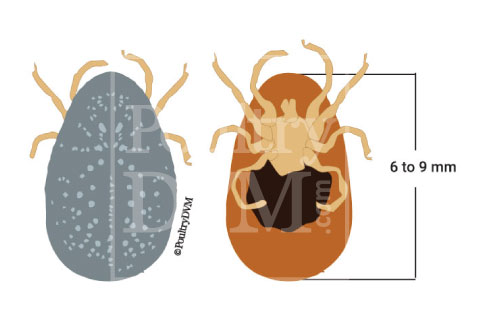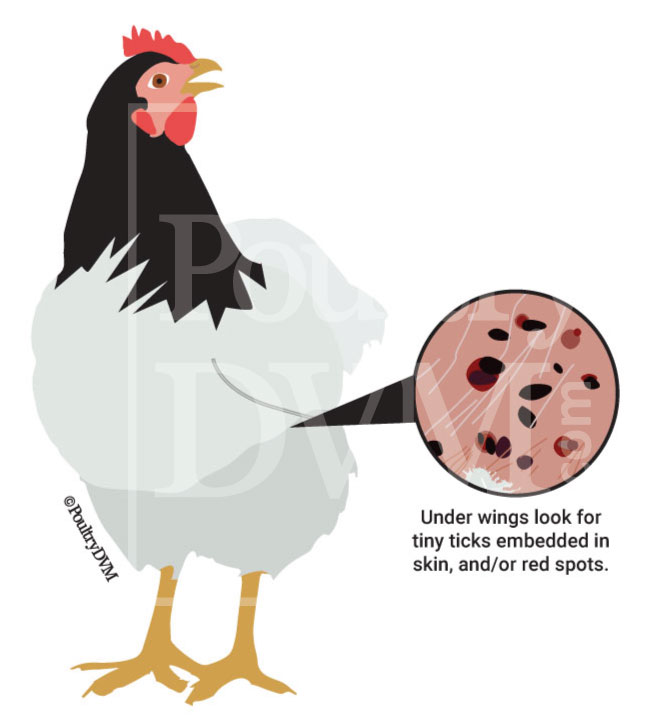Veterinary advice should be sought from your local veterinarian before applying any treatment or vaccine. Not sure who to use? Look up veterinarians who specialize in poultry using our directory listing. Find me a Vet
Other Names: Blue Bugs, Chicken Ticks


| Name | Summary | |
|---|---|---|
| Fipronil | Spray once on the back of the chicken's neck and repeat in 30 days | B Speer; Clinical Veterinary Advisor |
| Spinosad (Trade name Elector PSP) | Applied as a spray on all coop housing components. | B Mullens et al., 2017; A Murillo et al., 2017; Dow AgroSciences 2001 |
| Diatomaceous Earth (DE) (food grade) | Apply to housing components. Replace bedding and nesting material. | A Murillo et al., 2016; C Martin et al., 2012; D Bennett et al., 2011, G Damerow |
| Sulfur | Applied as a dust to all housing components in coop | A Murillo et al., 2016, G Damerow |
| Malathion | Used as a spray or powder applied to all housing components in coop. | G Damerow |
| Carbaryl synthetic | Applied as a powder (5% carbaryl) or spray (4 ounces of 80% carbaryl mixed in a 5 gallon bucket of water) on all housing components. Replace bedding and nesting material. | G Damerow |
| Pyrethrum | Applied as a powder or a spray to all housing components. Bedding and nesting materials should be replaced. | G Damerow |
| Permethrin | Applied as a powder (0.24% permethrin) or spray (3 ounces of 10% permethrin is mixed in a 5 gallon bucket of water), on all housing components. Replace bedding and nesting material. | G Damerow |
© 2024 PoultryDVM All Rights Reserved.